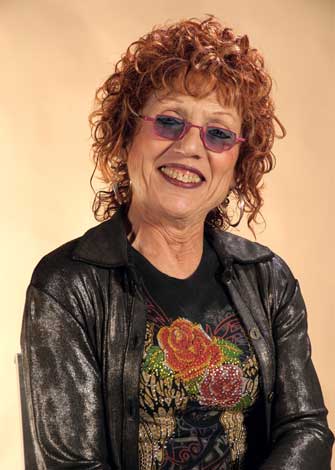
Judy Chicago and art historian Frances Borzello will discuss their new book on Frida Kahlo at the Brooklyn Museum on October 3 (photo by Donald Woodman)
Brooklyn Museum
200 Eastern Pkwy.
Iris and B. Gerald Cantor Auditorium, third Floor
Sunday, October 3, free with suggested contribution of $10, 2:00
718-638-5000
www.brooklynmuseum.org
Judy Chicago, creator of the world famous “Dinner Party” installation currently at the Brooklyn Museum and one of the pioneers of feminist art, will make a special visit to the Eastern Parkway institution on Sunday afternoon, October 3, at 2:00, celebrating the release of her latest book, FRIDA KAHLO: FACE TO FACE (Prestel, September 2010, $65). Chicago will be joined by her collaborator, art historian Frances Borzello, in discussing Kahlo’s place as a painter of women’s portraits; in the book, Chicago and Borzello examine 120 such works by the renowned Mexican artist, looking at them from both a personal and professional angle. The discussion will be followed by a Q&A and book signing.
Before or after the book launch, be sure to save plenty of time to see “The Dinner Party,” which has found a long-term home in the Elizabeth A. Sackler Center for Feminist Art on the fourth floor. The world’s most remarkable dinner party is held at a triangular table that consists of three 48-foot sides with 13 place settings apiece, paying tribute to 39 women who helped shape and change the world. The plate design — a combination of a butterfly pattern and a vulva — and the embroidered silk covering are different for each historical figure, based on their life and accomplishments, which are listed in the accompanying booklet and on Heritage Panels in an adjoining room. Another 999 women are honored with their names inscribed in gold on the Heritage Floor beneath the table; Chicago arranged it so that women who were successful in the same field are placed together. For example, Elizabeth Cady Stanton and other suffragists are written under Susan B. Anthony’s setting, and Harriet Tubman and other civil rights leaders are under Sojourner Truth’s setting. Chicago celebrates these women by using so-called feminine iconography, including embroidery, table setting, and tapestry weaving, all of which are generally associated with women, and placing the vulva front and center as an expression of not only life but power.